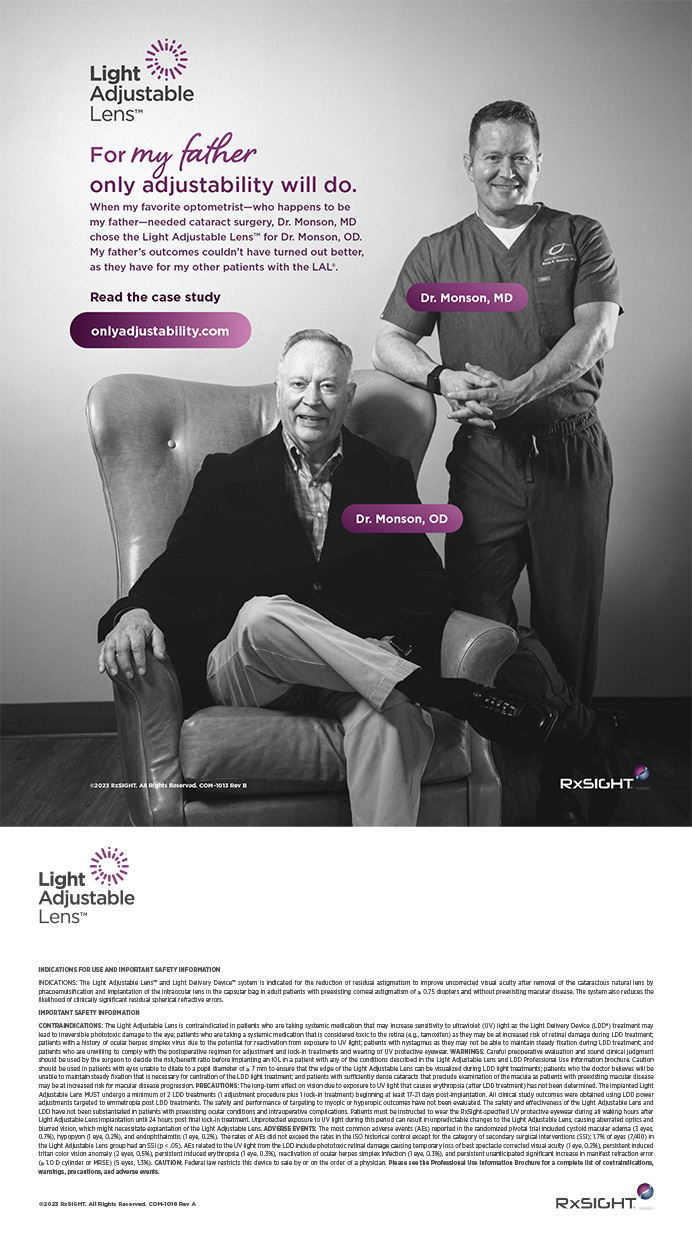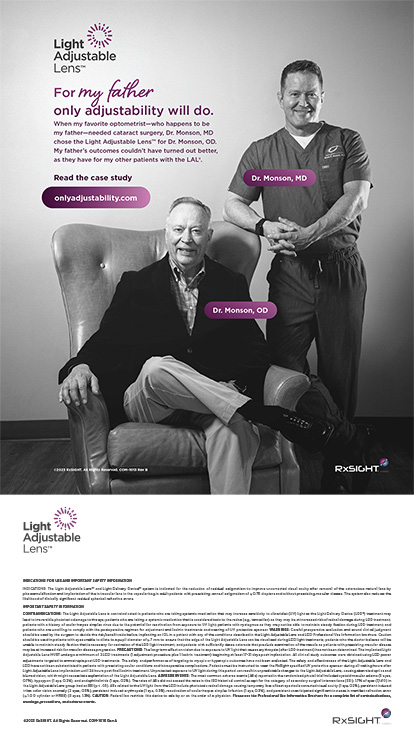The use of accelerated CXL is currently being investigated at approximately 83 clinical sites in the United States as part of a study sponsored by the American-European Congress of Ophthalmic Surgery or AECOS and conducted by Avedro.
The phase 3, multicenter, randomized controlled ACOS-KXL-001 study is designed to evaluate the safety and efficacy of the KXL System with VibeX (riboflavin ophthalmic solution; both by Avedro) for impeding the progression of and/or reducing maximum corneal curvature in keratoconus or corneal ectasia after refractive surgery. Three doses of irradiation are being evaluated in the study: 15 mW/cm2 for 8 minutes, 30 mW/cm2 for 4 minutes, and 45 mW/cm2 for 2 minutes and 40 seconds. All treatments are being performed with the epithelium removed.
The study was designed to enroll up to 2,000 study eyes with keratoconus and up to 2,000 study eyes with corneal ectasia following refractive surgery. Patients aged 12 years and older are being randomized to one of the three treatment groups by active treatment condition. All study eyes are being treated, and all fellow eyes that meet the criteria have access to treatment.
The primary outcome measure of the study is the mean change in maximum corneal curvature (Kmax) from baseline. The secondary outcome measure is a comparison of treatment groups within each treatment indication.
At the 2015 AECOS Summer Symposium in Deer Valley, Utah, John A. Vukich, MD, principal investigator of ACOS-KXL-001, presented an intermediate analysis of the study data. Dr. Vukich reported that the diagnostic-specific results showed larger effects for keratoconus than for ectasia. In patients with keratoconus, all three treatment groups have shown improvement.
“We are seeing the maximum effect at the longer treatment and lower intensity,” Dr. Vukich said, adding that the investigators are looking to determine if CXL may be not only dose dependent but also time dependent.
A similar trend in improvement was seen in patients with ectasia, although the results are not yet statistically significant. “If we could at least seek stability, that in itself is a very desirable outcome in these very challenging patients,” Dr. Vukich said.
The study, which began in July 2012, has an estimated primary completion date of January 2016.
additional studies on Accelerated CXL
For more on the safety and efficacy of this approach, see:
• Alnawaiseh M, Rosentreter A, Bohm MR, et al. Accelerated (18 mW/cm2) corneal collagen cross-linking for progressive keratoconus. Cornea. 2015;34(11):1427-1431.
• Hashemi H, Miraftab M, Seyedian MA, et al. Long-term results of an accelerated corneal cross-linking protocol (18 mW/cm2) for the treatment of progressive keratoconus [published online ahead of print August 24, 2015]. Am J Ophthalmol. doi:10.1016/j.ajo.2015.08.027.
• Ng AL, Chan TC, Cheng AC. Conventional versus accelerated corneal collagen cross-linking in the treatment of keratoconus [published online ahead of print July 3, 2015]. Clin Experiment Ophthalmol. doi:10.1111/ceo.12571.
• Chan TC, Chow VW, Jhanji V, Wong VW. Different topographic response between mild to moderate and advanced keratoconus after accelerated collagen cross-linking. Cornea. 2015;34(8):922-927.
• Ozgurhan EB, Akcay BI, Kurt T, et al. Accelerated corneal collagen cross-linking in thin keratoconic corneas. J Refract Surg. 2015;31(6):386-390.
• Marino GK, Torricelli AA, Giacomin N, et al. Accelerated corneal collagen cross-linking for postoperative LASIK ectasia: two-year outcomes. J Refract Surg. 2015;31(6):380-384.
• Shetty R, Pahuja NK, Nuijts RM, et al. Current protocols of corneal collagen cross-linking: visual, refractive, and tomographic outcomes. Am J Ophthalmol. 2015;160(2):243-249.
• Hashemi H, Fotouhi A, Miraftab M, et al. Short-term comparison of accelerated and standard methods of corneal collagen crosslinking. J Cataract Refract Surg. 2015;41(3):533-540.
• Waszczykowska A, Jurowski P. Two-year accelerated corneal cross-linking outcome in patients with progressive keratoconus. Biomed Res Int. 2015;2015:325157.
• Konstantopoulos A, Mehta JS. Conventional versus accelerated collagen cross-linking for keratoconus. Eye Contact Lens. 2015;41(2):65-71.


